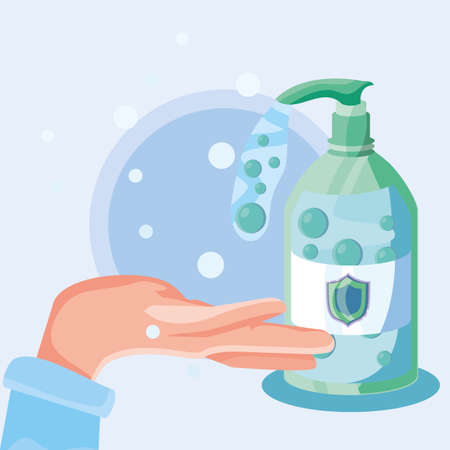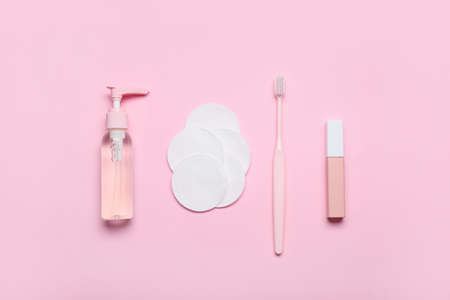Understanding Chemical Peels
Chemical peels are a popular non-surgical skin treatment across the UK, designed to improve skin texture and tone by applying a chemical solution that exfoliates the upper layers of the skin. The process encourages fresh, healthy skin to emerge, leaving you with a brighter, more rejuvenated complexion. There are several types of chemical peels commonly offered by British dermatologists: superficial peels (often using alpha-hydroxy acids like glycolic or lactic acid), medium-depth peels (such as trichloroacetic acid or TCA), and deeper peels (like phenol-based formulas). Each type varies in strength and expected downtime. Most people can expect some degree of redness, mild swelling, or flaking after the procedure—these are normal signs that your skin is healing and regenerating. Its important to have realistic expectations: while superficial peels require minimal recovery time, deeper treatments may involve more pronounced peeling and a longer healing period. Your dermatologist will help you choose the most suitable peel based on your skin concerns and lifestyle, ensuring both safety and satisfaction with your results.
Immediate Aftercare Essentials
Right after your chemical peel, your skin is at its most delicate and requires special attention—especially in the unpredictable British climate. Following these essential steps will encourage optimal healing, minimise discomfort, and help you achieve radiant results.
Key Steps to Follow Post-Peel
- Keep it simple: For the first 24-48 hours, cleanse your face with lukewarm water and a fragrance-free, gentle cleanser. Avoid scrubbing or using any exfoliants.
- Moisturise frequently: Choose a rich, hydrating moisturiser suitable for sensitive skin. This helps combat dryness caused by both the peel and the often chilly or windy UK weather.
- Avoid direct sunlight: Even on overcast British days, UV rays can hinder recovery. Stay indoors as much as possible and wear a wide-brimmed hat if you need to go outside.
- No makeup: Give your skin a complete break from cosmetics for at least 24 hours post-peel to prevent irritation or infection.
- Hands off: Refrain from touching, picking, or peeling flaking skin—it’s tempting, but it can lead to scarring or prolong healing.
Aftercare Tips Tailored to the British Climate
| Concern | Advice | Why It Matters in the UK |
|---|---|---|
| Cold & Windy Weather | Apply an extra layer of barrier cream before heading outdoors. | Protects against windburn and moisture loss common in British winters. |
| Frequent Rain & Humidity | Avoid walking in drizzly weather without protection; use an umbrella and keep skin dry. | Dampness can increase sensitivity and risk of infection during recovery. |
| Lack of Sunlight (Winter Months) | Don’t skip SPF—even on grey days, UVA exposure persists. | UV rays penetrate clouds; post-peel skin is highly vulnerable. |
Your Self-Care Mindset
This is your time to nurture yourself—think of aftercare as a chance to slow down and invest in your confidence. Each step you take now sets the foundation for luminous, healthy skin in the weeks ahead. Be gentle, be patient, and remember: small acts of care today will give you lasting radiance tomorrow.

3. Managing Redness and Sensitivity
Chemical peels can leave your skin feeling tender, red, and sensitive—perfectly normal reactions as your complexion begins its journey to renewal. To ease discomfort and promote a smooth recovery, British dermatologists recommend a combination of gentle care and trusted UK-available remedies. First and foremost, keep your skincare routine simple: reach for fragrance-free cleansers and avoid anything with harsh exfoliants or alcohol, which can further irritate post-peel skin. When it comes to moisturising, opt for products containing ceramides or hyaluronic acid, such as those from CeraVe or La Roche-Posay, widely available at Boots or Superdrug. These ingredients help lock in moisture and strengthen the skin’s barrier without clogging pores.
Soothing Solutions You Can Trust
For calming redness, British dermatologists often recommend applying a cool, damp flannel to the face or using a thermal spring water spray like Avène. These simple remedies can reduce heat and bring instant relief without the risk of aggravating sensitive areas. If you’re after an extra boost of comfort, look for creams containing panthenol (vitamin B5) or allantoin—both highly regarded for their soothing properties.
Avoiding Common Irritants
It’s wise to steer clear of perfumed products, essential oils, and heavy makeup while your skin heals. If makeup is necessary, choose mineral-based options and always remove it gently at the end of the day. Remember: less is more during this delicate phase.
When to Seek Further Advice
If redness persists longer than expected or is accompanied by swelling or discomfort that doesn’t settle, don’t hesitate to consult your dermatologist or GP. British skincare professionals are there to support you every step of the way—ensuring your confidence grows along with your skin’s renewed radiance.
4. Sun Protection and Weather Considerations
One of the most crucial aspects of aftercare following a chemical peel is shielding your freshly treated skin from the ever-changing British weather. Our climate is notoriously unpredictable—one moment it’s drizzling, the next there’s a surprise burst of sunshine. This means you must remain vigilant about sun protection, as your skin will be especially sensitive and prone to pigmentation after a peel.
Why Sun Protection Matters: Even on cloudy days, up to 80% of UV rays can penetrate through, putting your healing skin at risk. Exposure can lead to unwanted dark spots, delayed recovery, and increased sensitivity. British dermatologists strongly recommend making SPF an integral part of your daily routine, regardless of the season.
Recommended Sun Protection Measures
| Protection Method | Details & Tips |
|---|---|
| Broad-Spectrum Sunscreen | Opt for SPF 30 or higher; reapply every two hours if outdoors, even on overcast days |
| Physical Barriers | Wear wide-brimmed hats and UV-protective sunglasses when venturing outside |
| Sheltering Habits | Seek shade during peak sunlight hours (11am–3pm), particularly in spring and summer |
| Clothing Choices | Lightweight, long-sleeved garments offer additional defence against both sun and wind exposure |
The British Weather Factor
The UK’s weather can swing from damp and chilly to surprisingly sunny within a single afternoon. Wind can also exacerbate dryness and irritation post-peel. Always check the forecast before heading out, and adjust your skincare protection accordingly. Remember: consistent care is key to a smooth recovery and radiant results.
Gentle Encouragement for Daily Practice
You deserve to feel confident in your skin’s recovery journey. By prioritising sun protection and adapting to our unique climate, you’re not just caring for your complexion—you’re investing in long-term skin health. Let this be your gentle nudge: pop that sunscreen in your handbag or coat pocket before leaving home, and make protective habits second nature.
5. Moisturising and Barrier Repair
After a chemical peel, your skin’s barrier is temporarily weakened, making it especially important to focus on gentle moisturising and barrier repair. British dermatologists recommend selecting fragrance-free, hypoallergenic moisturisers that are specifically designed for sensitive or compromised skin. Look for products containing ceramides, hyaluronic acid, or glycerin, as these ingredients help lock in moisture and support the natural rebuilding of your skin’s protective layer.
Choosing the Right Moisturiser
When shopping for moisturisers in the UK, prioritise brands with a reputation for clinical efficacy and minimal irritants. It’s best to avoid heavily perfumed products or those with alcohol, as these can exacerbate dryness or irritation post-peel. Instead, opt for creams or ointments over lotions, as they tend to provide a richer hydration suitable for healing skin.
Recommended British Brands
Some trusted British brands include Cetaphil, E45, and Simple. These offer gentle formulations that are widely recommended by dermatologists across the UK. For more intensive hydration, Cetraben Cream is another excellent choice, often suggested for its barrier-repairing properties. If you prefer a luxury touch while ensuring safety, look for the sensitive skin range from No7 by Boots.
Moisturising Routine Tips
Apply your chosen moisturiser twice daily—morning and evening—immediately after cleansing with lukewarm water and a gentle cleanser. Pat your face dry with a soft towel (avoid rubbing) before smoothing on your cream. Be generous but not excessive; the goal is to keep the skin supple without clogging pores. Remember, consistency is key to supporting healthy recovery and maintaining results after your chemical peel.
6. What to Avoid During Recovery
To achieve the best results from your chemical peel, knowing what to steer clear of during recovery is just as important as following your aftercare routine. Even the most diligent aftercare can be undermined by common mistakes. British dermatologists emphasise the importance of avoiding certain activities and products that are particularly relevant to our daily habits in the UK.
Common Pitfalls to Sidestep
First and foremost, avoid sun exposure as much as possible. Even on cloudy British days, UV rays can penetrate through, so always use a broad-spectrum SPF 30 or higher if you must go outside. Skip tanning beds altogether, as they can severely damage newly sensitive skin.
Activities Best Left for Later
During recovery, hold off on swimming—whether it’s in chlorinated pools or the sea—as these environments can irritate peeling skin. High-intensity workouts that cause excessive sweating should also be postponed for at least a few days, as sweat may sting and disrupt the healing process.
Everyday Habits That Hinder Healing
Resist the urge to pick or peel flaking skin; this can increase the risk of scarring and prolong redness. It’s also wise to avoid hot baths, saunas, and steam rooms, which are popular ways to unwind in Britain but can exacerbate irritation.
Products and Ingredients to Avoid
Steer clear of exfoliating scrubs, retinoids, and acids (like glycolic or salicylic) until your skin has fully recovered. These potent ingredients can do more harm than good in the immediate post-peel phase.
Mind Your Beauty Routine
Many Brits love a proper skincare routine, but now is not the time for experimenting with new products or treatments. Stick to simple, fragrance-free moisturisers and cleansers recommended by your dermatologist.
The Importance of Patience
Your skin needs time to heal—don’t rush it. By consciously avoiding these common pitfalls, you’re giving yourself the best chance at a radiant, healthy complexion post-peel.
7. When to Seek Professional Advice
Chemical peels can work wonders for your skin, but its important to recognise when things arent quite going as planned. While some redness, mild swelling, or flaking is perfectly normal during recovery, certain symptoms should prompt you to consult a UK-registered dermatologist without delay. If you notice persistent pain, severe redness that worsens over time, unusual swelling, blisters, pus, or signs of infection such as increasing warmth and tenderness, these could indicate complications needing professional intervention. Likewise, if you experience changes in skin colour—either darkening (hyperpigmentation) or lightening (hypopigmentation)—that dont improve, it’s best not to wait it out. Trust your instincts; if anything feels off or you’re unsure about your healing process, don’t hesitate to seek expert guidance. Remember, British dermatologists are highly trained to support your aftercare and ensure the best outcome for your skin health. Your confidence and comfort are paramount—never feel reluctant to ask for advice if something doesn’t seem right.


